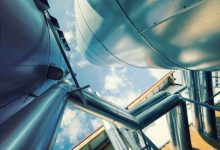The Australian Renewable Energy Agency has flagged the possibility of another renewable hydrogen funding round, as part of an updated list of investment priorities published on Wednesday.
ARENA says it will prioritise investment in green hydrogen research, development and demonstration, as well as in grid integration technologies, as it sharpens its funding focus on boosting the competitiveness and supply of renewable energy in Australia.
The updated Investment Plan is the latest shift in focus for the federal government Agency, which has invested $1.44 billion in 478 renewable energy projects with a total value of $5.49 billion since being founded by the then Gillard Labor government in 2012.
However, as this table below illustrates, the money remaining within ARENA is rapidly diminishing, and in 2022-23 will fall to below $10 million.
 In 2019/2020 ARENA’s priorities will be fine-tuned to support a greater uptake of renewable energy in the national grid, accelerate the development of Australia’s domestic and export hydrogen industries, and to help cut industrial emissions.
In 2019/2020 ARENA’s priorities will be fine-tuned to support a greater uptake of renewable energy in the national grid, accelerate the development of Australia’s domestic and export hydrogen industries, and to help cut industrial emissions.
“Our new investment priorities are geared towards future proofing our energy system and economy and helping to further unlock the vast renewable resources Australia has,” said ARENA CEO Darren Miller.
“We need to overcome the challenge of integrating renewables into the grid as we switch to an electricity system that is more complex, more decentralised and more variable.
“We need to launch a hydrogen industry to create opportunities across the domestic economy and to help position Australia to become a major renewable energy superpower through exporting hydrogen.
“Finally, we need to support industry, which accounts for around 40 per cent of total final energy use in Australia, as they transition to renewables and look to reduce emissions.”
As part of the plan to “accelerate hydrogen,” the ARENA plan says that “subject to scoping and confirmation of need,” it may run a funding round in research, development and demonstration focused on short-to medium-term industry needs.
This would follow up on a $20 million funding round launched by the Agency in late 2017, to encourage early stage research and development into hydrogen and the export of renewable energy such as “solar fuels”.
In its updated Investment Plan, ARENA describes renewable hydrogen as “a key alternative” to renewable electricity, in that “it can be combusted to produce heat, stored for long periods and transported large distances overseas.”
But there is much work to be done, and money to be spent, before all these advantages can be readily unlocked.
“The hydrogen sector is still in its infancy and while key technologies like electrolysers are available, there are few large-scale systems deployed and they are still expensive,” the document says.
“Growing this new sector will take many years and require support beyond ARENA’s funding horizon. However ARENA’s support now can drive the establishment of this new industry as well as progressing RD&D to unlock greater cost reductions.”
On grid integration, ARENA says its focus will be on investing in innovative ways to use, store, manage and share renewable energy.
“Innovation in enabling technologies and new ways of managing the electricity system will allow Australian families and businesses to confidently adopt increasing shares of renewable electricity,” the Plan says.
Finally, ARENA will also prioritise investment in “innovative and replicable technologies and processes” to increase the uptake of renewables by the industrial sector – including renewable electricity, renewable fuels, solar thermal, hydrogen and bioenergy.
In particular, the Agency is keen to invest in renewable technologies for process heat, including real costs and performance data in relevant local applications, and identifying priority RD&D needs.
“We need to support industry, which accounts for around 40 per cent of total final energy use in Australia, as they transition to renewables and look to reduce emissions,” said Miller.
“Without our financial support the pathway to commercialisation would be blocked for many new technologies and businesses so ARENA we has an important role to play.”










